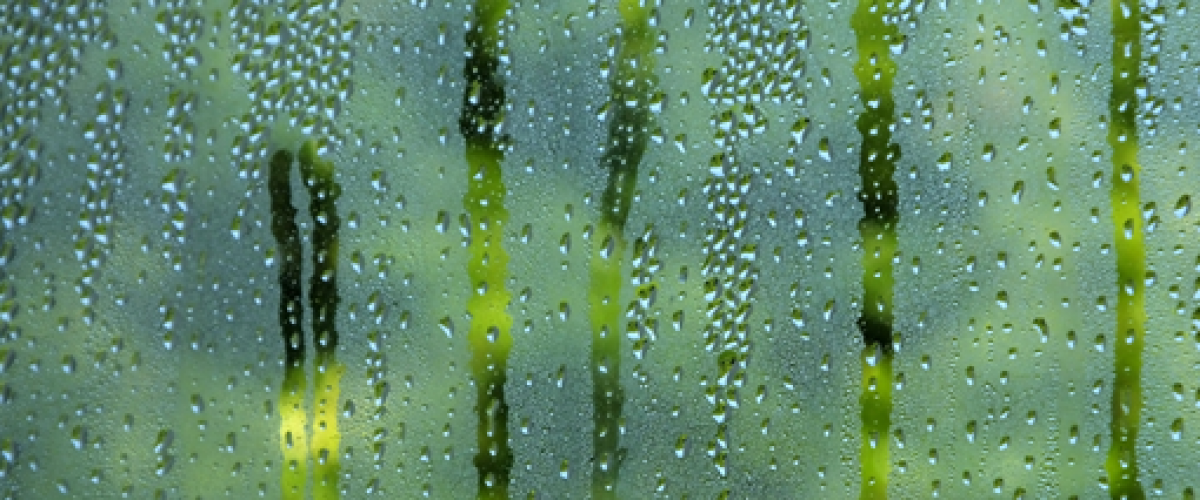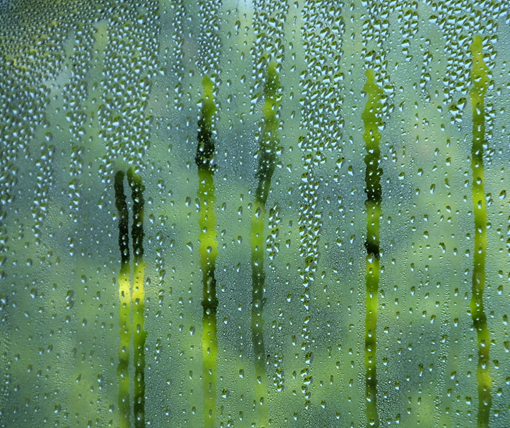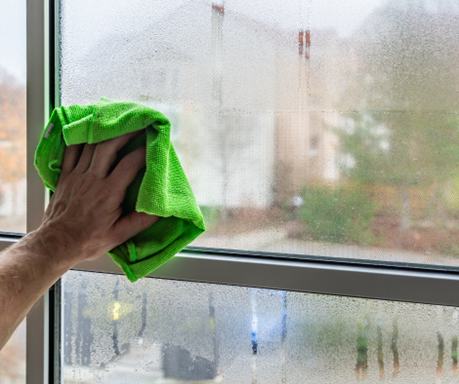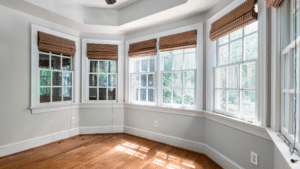Condensation is a common issue, especially when the temperature changes drastically. This annoyance can cause foggy windows that blur your view and dampen drapes. If not addressed, it can damage your home and furnishings. Especially challenging during winter months or in colder regions like the North or Midwest, learning how to prevent excess moisture in your home is essential for reducing the risks associated with this problem.
What is Condensation, and How Does it Occur?
Though usually undetected, moisture is almost always in the air. When air vapor reaches the dew point (the atmospheric temperature required for a liquid to begin to form), water will build up on surfaces colder than the air. In other words, condensation occurs when you have the right combination of moisture and surface temperature. You may recognize the dew droplets on the grass in your lawn or drips running down the glass of a cold beverage, but when condensation is within a home or building, it reminds us that it can be found everywhere.
Excess moisture inside a home or building can occur in various ways that greatly depend on the home and family habits. For example, cooking, showering (foggy mirrors), aquariums, humidifiers, leaky plumbing fixtures, and heated appliances all contribute to condensation. It can even arise from people and pets breathing or if you have an abundance of houseplants. Other sources you might not think about include firewood, unvented clothes dryers, and even common ‘new build’ moisture, which is typical for the first year after construction.
Energy-Efficient Windows Do Not Cause Condensation
Among all the places in your home, condensation is often most noticeable on windows because it causes the glass to fog up and cloud your otherwise clear views. However, windows do not cause condensation, nor are they resulting from a seal failure. In fact, moisture on the inside of your windows indicates that your energy-efficient windows are working correctly. When installed correctly, energy-efficient windows trap humidity by keeping conditioned air in and outside air out. Because windows are typically the coolest spot on a wall, they tend to reach the dew point before other warmer surfaces, which causes water to form. It’s a natural process for the exterior of your home and will evaporate on its own as the sun rises and the temperature increases.
How Does Condensation Pose a Risk to Your Home?
Since condensation is a typical occurrence, it cannot be entirely prevented and will do little harm in small amounts. However, excess amounts of moisture left unaddressed over time can be a sizeable detriment — and we’re not just talking about blocking your window views. According to EcoHome, interior condensation goes through a constant evaporation process, increasing the humidity levels and spreading the problem to the rest of the house. When a significant percentage of humidity is present, this causes a never-ending cycle of condensation issues that will damage your home’s structural integrity over time. Humidity can also cause potentially severe stains and damage to drywall that, depending on the intensity of the destruction, may need to be replaced entirely (which is a costly fix).
One of the most significant contributing factors to consistent water-related damage is mold, which thrives in humid environments and on moist surfaces like walls, carpets, fabric, wood, and insulation. Mold effectively eats whatever it’s growing on, causing risk to the building and its furnishings. Taking the necessary steps to prevent excess moisture will enable you to make the most of your energy-efficient windows without allowing condensation to create damage.
What Can You Do to Reduce Condensation?
As mentioned above, windows do not cause condensation – relatively high humidity levels do. With that being the case, the best thing you can do to reduce humidity in your home is to control moisture sources and improve airflow to windows and doors. The first step is to raise indoor air temperatures to increase surface heat. It also helps to work on promoting air circulation throughout the home by using ceiling fans, leaving doors between rooms ajar, and opening blinds and curtains during the day to ensure the warm air makes it to the surface of your windows.
Simple steps like utilizing your bathroom’s ventilation fans to remove bath and shower moisture and using your kitchen ventilation fans (usually located right above the stove) will also make a huge difference. Other helpful tips include ensuring aquariums are covered, not overwatering plants, fixing all plumbing leaks, and pausing the use of vaporizers and humidifiers. Surprisingly, water can also hide on firewood, so limiting how much you keep in the house to what you currently need is recommended. To remove excess moisture, dehumidifiers and air exchangers will do wonders. You can also use exhaust fans or open windows briefly for ventilation.
Experts in Condensation and Window Replacement
With the information and tips above, we hope you are now more prepared to combat excess humidity in your home. For more information, download our Understanding Condensation brochure. If your windows aren’t performing as they should contact a SoftLite dealer to get started on a replacement.


 Single Hung
Single Hung
 Double Hung
Double Hung
 Casement
Casement
 Picture/Shapes
Picture/Shapes
 Sliding
Sliding
 Awning & Hopper
Awning & Hopper
 Bay & Bow
Bay & Bow
 Sliding Patio Doors
Sliding Patio Doors
 Entry Doors
Entry Doors




